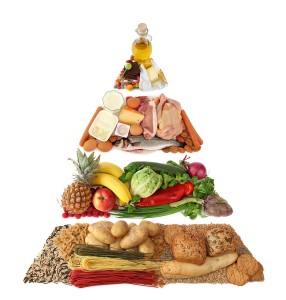Despite being in one of the most advanced and wealthiest nations in the world, millions of Americans cannot afford to consume basic nutrition and are forced to rely on government and charitable food programs to get by, according to a new report that is shedding light on the number of people who are food insecure.
The non-profit organization Feeding America revealed the results of its study entitled “Hunger in America 2014” and highlighted that 46 million people depend on various food programs, including soup kitchens, school lunch programs, food pantries and others, to supplement their daily diet. And this isn’t just for homeless people.
 According to the report, food aid recipients consist of 12 million children, seven million seniors and millions more of military families, young college graduates and the working poor. Food insecurity for these demographics has worsened since the economic crash a few years ago.
According to the report, food aid recipients consist of 12 million children, seven million seniors and millions more of military families, young college graduates and the working poor. Food insecurity for these demographics has worsened since the economic crash a few years ago.
Between 10 and 12 percent of the population were food insecure between the years 1995 and 2008, but that figure swelled to nearly 15 percent as of 2008, and government statistics suggest that the level of hunger has yet to experience any sort of decline.
The study also consisted of approximately 60,000 interviews and the median household income of these respondents was just $9,175 per year.
Although the government claims unemployment is diminishing, millions remain hungry because of the wide gap between the cost of living and wages. This year alone, for instance, the cost of food has drastically increased, while wages have remained stagnant.
An important data note made by Feeding America is that two-thirds of the 15.5 million households it serves have had to choose to either pay for food or pay for medical care, and 69 percent have had to either pay for food or pay for their utilities. However, even when these people purchase food it may not be healthy nutrition.
Seventy-nine percent of study participants noted that they purchased the cheapest food available even when they knew it wasn’t the healthiest option. Of course, the consumption of junk food and processed goods leads to greater health issues down the road.
“The results from this historic study are truly alarming. Many of the people we serve struggle not only to get enough to eat, but also to keep a roof over their heads, the lights on in their homes, and to cover their healthcare and medicine costs,” said Bob Aiken, CEO of Feeding America, in a statement. “Hunger in America 2014 highlights the enormous hardships faced by the millions of low-income families who rely on the Feeding America network for help.”
Roughly 47 million Americans are still depending on food stamps, though officials say the United States economy has been improving since the Great Recession came to a conclusion. We reported Monday of a new survey that found Americans are more pessimistic on the economy, while a Federal Reserve report discovered that one-quarter of households are “just getting by.”
Is the U.S. economy improving or is it just that the stock market is booming?



